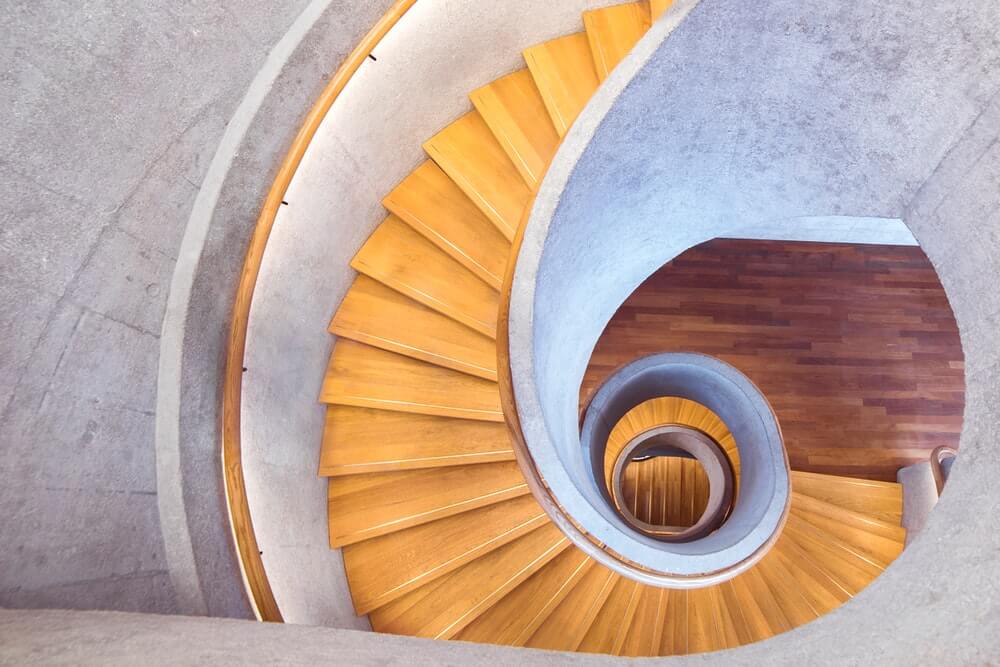 Spiral staircases have a unique charm and mystery, traditionally adorning grand entrance halls or dark, tight tavern corners. A spiral staircase can give you a sense of adventure and curiosity, catching glimpses of what’s above or what’s below.
Spiral staircases have a unique charm and mystery, traditionally adorning grand entrance halls or dark, tight tavern corners. A spiral staircase can give you a sense of adventure and curiosity, catching glimpses of what’s above or what’s below.
This symbol of descending or ascending almost into a different layer of space or time has inspired moviemakers and authors alike. Alfred Hitchcock included a dramatic spiral staircase in his classic film Vertigo, inducing a feeling of fear and drama as the seemingly endless staircase descends below.
On the other hand, we cannot help but reminisce about the image of Scarlett O’Hara dashing down a grand spiral staircase in Gone With the Wind. The circular shape of the staircase added momentum and intrigue, matching her spirited character.
The Origin of the Spiral Staircase
Spiral staircases date back to antiquity and have been present in historical references from thousands of years back. The oldest spiral staircase still standing can be found inside Trajan’s Column in Rome.
Spiral staircases are a great solution to tight spaces, allowing the staircase to occupy a smaller surface on both levels. These staircases are practical in lighthouses and other tower-like structures, ascending abruptly to save time and space. They were also the structure of choice in medieval castles and mansions, allowing the servants to move around the house discreetly and quickly.
A Spiral of Style
As straightforward as the concept is, spiral staircases come in many different styles. Even in modern architecture, a spiral staircase can be a centrepiece that evokes different eras or serves as a contemporary interpretation of the design.
Here are some examples:
- Stone spiral stairs: Stone spiral stairs were around in the French Renaissance era, surrounded by the impressive columns of huge chateaux. Mediterranean architecture also featured white stone spiral stairs, which made it possible to navigate through the narrow and steep streets of the shore villages.
- Wooden staircases: Grand wooden staircases are still making appearances in extravagant, spacious heritage homes. They were central pieces in Victorian buildings, combining practicality with their decorative quality.
- Steel or rot iron spiral cases: if we fast-forward a bit in history, spiral staircases started being made of steel or rot iron because metal was cheap and easy to be modelled. The iconic look of the metallic fire escapes of the big American cities still inspires modern homeowners.
Legendary Stairs
It’s not hard for the spiral staircase to become memorable with such a long history and dramatic look. Famous examples include the spiral staircases in Greenwich (The Tulip Stairs), the Vatican Museum, the Loretto Chapel in New Mexico (the self-sustaining wooden staircase), the Lello Bookshop in Portugal, and many more.
The Next Step
If you are passionate about design and want to add a touch of elegance to your home’s interior, a spiral staircase can be just the piece you need. Our team of period home builders at Australian Heritage Homes is ready to help you envision the perfect spiral staircase and make it a reality. Get in touch with us today!